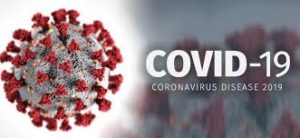Coronavirus Information Summary
A Situation Summary on COVID-19 from the CDC
There’s a lot of information and mis-information out about COVID-19, more commonly known as Coronavirus, right now. While it is important to be updated on the facts and safety precautions that should be taken, it is also important to not allow the confusion and fear surrounding the virus to take over. That being said, the CDC has produced a very informative article on what this virus is, and what you can do to prevent the spread.
As of March 7th, 2020, there are 164 reported cases in the United States. Only 19 states so far have had outbreaks, and 11 people have died from the virus. The CDC reports that 36 of these cases are travel related, 18 were spread from person to person, and 110 cases are currently under investigation to figure out how they spread. Those infected on the cruise ship being held off of California will be quarantined on four different military bases around the country.
At this time, there are many unknowns surrounding COVID-19. Reported symptoms and illnesses range from mild to severe. The information gathered so far suggests that most contracted illness is mild, older people and those with already contaminated immune systems (people with underlying health conditions such as heart disease, lung disease, diabetes, etc.) have a higher chance of contracting the virus and having a more severe strain of it.
Symptoms for Coronavirus typically appear 2-14 days after exposure and may include fever, cough, and/or shortness of breath. It is important to contact a doctor if you develop symptoms, have been in contact with a person known to have COVID-19, and/or recently traveled from an area with a widespread community of COVID-19. To stop the spread of the virus, it is important to stay home if you are infected. Staying home, avoiding public areas and transportation, seperating yourself from family members, limiting contact with pets and animals and calling ahead to notify doctors offices before a visit are some of the best ways to help prevent the spread of the virus. If you must leave your home (preferably only to go to a doctors appointment) or be in contact with a family member, be sure to wear a mask and keep as far a distance from those around you as possible. If you are caring for a person who is sick, be sure to wear a mask and request that they wear a mask as well when you are in the same room.
When sick, be sure to cover your mouth and nose with a tissue when coughing or sneezing, and dispose of the tissue into a lined trash can immediately. Wash your hands often and well, ensuring that you scrub for at least 20 seconds. You may follow up with alcohol-based hand sanitizer, but it is not necessary. If no soup and water is available, though, be sure to use hand sanitizer. Lastly, do not share household items and confine yourself to one room and one bathroom in the house if you share with another person. The non-infected person should clean and disinfect the whole home thoroughly and frequently, at least once a day. When cleaning and disinfecting, be sure to pay extra attention to things such as counter tops, doorknobs, bathroom fixtures, phones, and bedside tables. Even if trash receptacles are lined with a disposable bag, they should be disinfected every day as well. Discard single use items immediately and wash thoroughly after every use items such as towels, clothing, eating utensils, and bedding. Do not share anything with an infected person.
Lastly, stay at home until you are instructed to leave by a healthcare provider. Patients should remain under home isolation until the risk of secondary transmission to others is considered to be low by a healthcare provider. The decision to discontinue in home isolation is on a case-to-case basis, so be sure to consult with your doctor before deciding to venture out of your home.
Overall, the risk for healthy people in the United States is thought to be low, at this time. The virus is not a widespread epidemic in the United States at this time. More cases will likely be reported in coming days, so it is important to check the CDC website for more updates, as well as keeping up with local and national news sources for updated information. For the most relevant and best information, look to the CDC first and foremost.
If you are in need of any more information, please look at the following website. Call your doctor immediately if you find yourself having any of the symptoms listed above.
CDC Coronavirus Disease 2019 (COVID-19) Situation Summary: https://www.cdc.gov/coronavirus/2019-nCoV/summary.html

